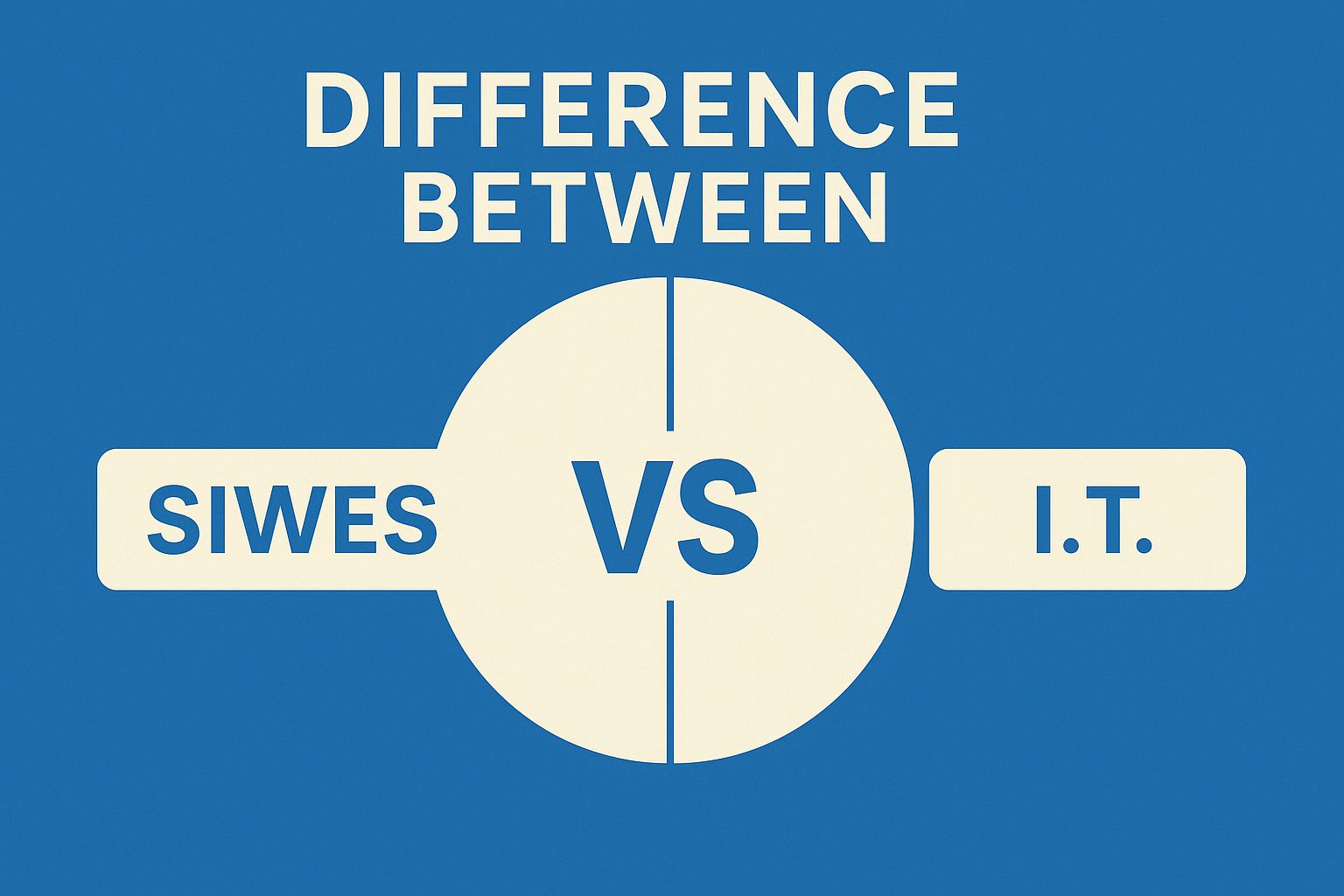
Table of Contents
For many polytechnic students in Nigeria, the terms SIWES and Industrial Training (I.T) are used interchangeably — but they are not identical. Understanding the difference helps students meet institutional requirements, complete the correct documentation, and get the most from workplace learning.
Source and further reading: inspiration from a comparative post and official SIWES guidance.
What is SIWES?
SIWES (Students’ Industrial Work Experience Scheme) is a formal, nationally recognised programme designed to expose students in technical, science, and technology-related programmes to real workplace environments. It is structured and usually coordinated by a school unit (often in partnership with the Industrial Training Fund or relevant department) and typically requires a logbook, supervisor reports, and a final assessment by school examiners.
What is Industrial Training (I.T)?
Industrial Training (commonly shortened to “I.T” in many polytechnics) refers to the practical on-the-job experience a student undertakes. In many contexts, I.T describes the actual placement or attachment — the time spent performing tasks in an industry setting. Depending on the institution, I.T may be the name used for final-year attachments or year-long training after the National Diploma (ND) program.
Key differences — at a glance
- Official status: SIWES is a national programme with specific administrative rules; I.T is a broader term for the practical training experience itself. 3
- Who must do it: SIWES typically applies to students in approved technical and science programmes. I.T can refer to any industrial attachment requirement (including those for non-SIWES courses) depending on school policy. 4
- Timing in the academic cycle: SIWES attachments are commonly scheduled during specific semesters or long vacations (often after the first year or during ND programmes); I.T sometimes refers to training that happens after ND or at the end of studies. Institutional calendars vary.
- Duration and structure: SIWES has a recommended duration (commonly several months — e.g., 4–6 months in many polytechnics); I.T duration varies more widely based on school rules or program design.
- Documentation and assessment: SIWES requires formal logbooks, employer and school supervisor reports, and often a school-based defense or viva in some institutions; I.T may require a completion letter and report but the assessment formats can differ.
Why schools and employers treat them differently
SIWES was created to standardize skills exposure across institutions — it sets minimum standards and documentation expectations so employers and schools can evaluate student readiness. Employers may view SIWES placements as part of a national pipeline for recruiting entry-level technical staff, while an I.T attachment (if not under SIWES) might be treated more flexibly by both the company and the school.
Practical implications for students
- Confirm your programme’s requirement: Check your department or school SIWES/I.T coordinator to know whether your course is SIWES-approved and the exact timing and duration required.
- Prepare the right documents: If you are on SIWES, obtain the official logbook and ensure your employer signs weekly/monthly entries and supervises your tasks. For non-SIWES I.T, secure an official completion letter and write a structured report.
- Maximise learning: Treat both experiences as opportunities to apply theory, build soft skills (communication, punctuality, teamwork), and collect evidence of real tasks (samples, photos, write-ups) for your portfolio.
- Assessment readiness: Some institutions conduct viva/defense sessions after SIWES; practice presenting your activities, lessons learned, and how academic knowledge applied on the job.
Common misconceptions
A frequent mistake is assuming that because a placement is called “I.T” it has the same administrative backing as SIWES — this may not be true. Another is neglecting documentation — even informal I.T placements usually require some form of proof to earn academic credit.
Conclusion
In short: SIWES is a formal, nationally recognised scheme with established requirements and documentation expectations; I.T is the practical training attachment — the hands-on experience — and may be used as a general term for industrial placements. Know which applies to your course, follow your school’s rules, and use whichever placement you do to build real skills and evidence for future employers.
